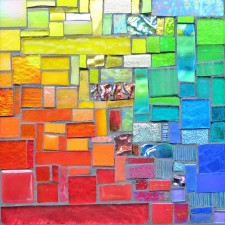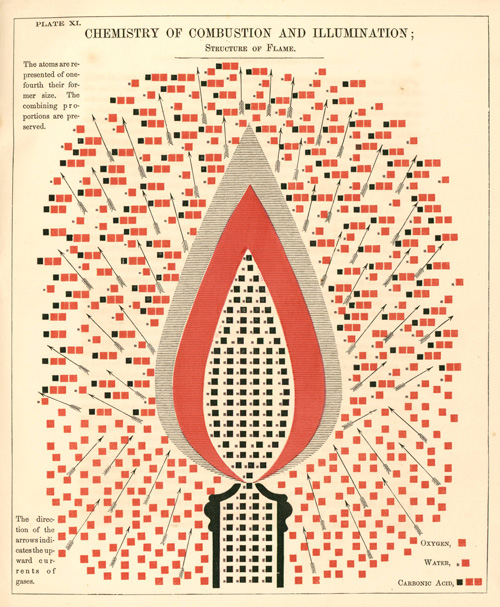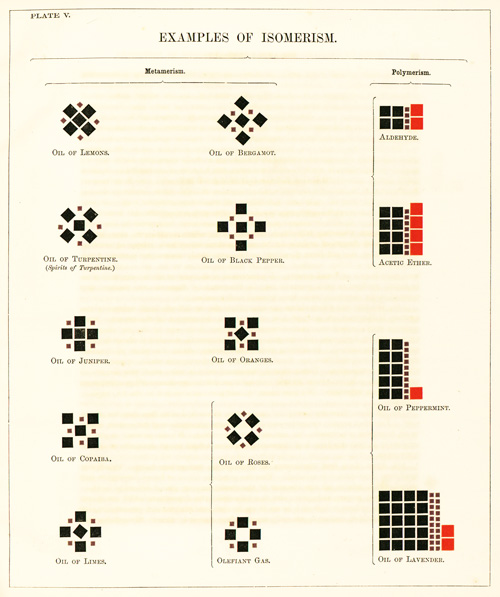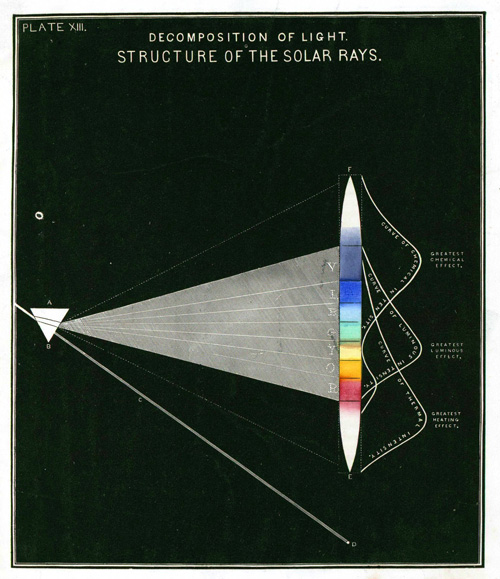I first saw these chemistry illustrations via Maria Popova over at Brain Pickings, How Chemistry Works: Gorgeous Vintage Science Diagrams, 1854, by Edward Youmans. My mosaic eye was immediately drawn to the modular construction of the flame in Chemistry of Combusion and Illumination.
The quilt-like arrangements of Isomerism intrigued me as well. And of course, the decomposition of light resonates with my love of color gradation.
Edward Livingston Youmans(1821-1887), went through many travails with his eyesight, and for many years, his sister Eliza Ann Youmans acted as his proxy in the chemistry lab, through her persistence in finding teachers who would take a woman student. Edward was enchanted by science, though chemistry was a challenge because of difficulty of visualizing the processes, and as his sister relates in Popular Science Monthly(the magazine he founded with his brother):
When he reflected that chemistry was fast becoming a popular branch of education, and that, so far as its processes were concerned, the youths who were studying it might be classed, along with himself, as blind, their situation naturally interested him. Occupied with this subject, there one day arose in his mind a scheme for picturing atoms and their combinations that would bring the eye of the student into more effectual service. . . Atoms of the different elements were shown by diagrams of different colors, the relative sizes of which expressed their combining ratios, and the compounds exhibited the exact numbers of the respective atoms that unite to form them. . . He thought that chemistry could be made enticing as well as intelligible to learners who had not the help of experiments in its pursuit.
What a startling image of “bringing the eye of the student into more effectual service,” and the enticement of beautifully colored diagrams(as the subtitle of the book states.) After Edward married in 1861, Eliza Ann Youmans went on to write several books on botany, including The First Book of Botany: Designed to Cultivate the Observing Powers of Children(1870). Among other topics for Popular Science Monthly, she wrote about optics, Darwin, and lace making.



